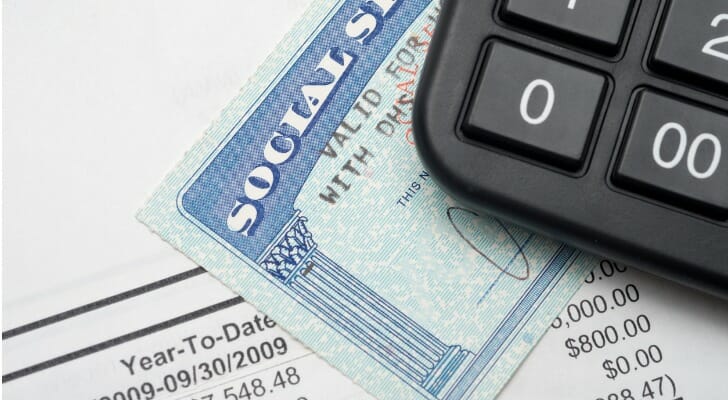If Social Security benefits figure into your retirement income plan, then reading your Social Security Statement is a must. This statement can help you estimate how much you’ll receive from Social Security once you retire. That can be useful when setting investing and savings goals. Knowing how to find your statement and decode it is a must for retirement planning.
What Is a Social Security Statement?
Your Social Security Statement is issued by the Social Security Administration. It tells you about how much you or your family would receive in disability, survivor or retirement benefits. You can also see your record of lifetime earnings.
This statement is meant to be used a tool for retirement planning.It isn’t typically a hard estimate of how much money you will get from Social Security once you retire. The Social Security Administration uses your earnings record as a baseline for forecasting future income. That number is then used to estimate Social Security benefits.
Because you haven’t earned that future income, your estimated benefit isn’t set in stone. If your earnings change late in life, your Social Security Statement could change as well.
How to Find Your Social Security Statement

The Social Security Administration mails out statements to workers but the easiest way to get yours is to go online.
You can get your statement by creating a mySocialSecurity acount, which is free to do. To create your account, you’ll need to choose a username and password. You’ll also need to have:
- A valid email address
- Your Social Security numbers
- A U.S. mailing address
You have to be at least 18 to set up a mySocialSecurity account. You can’t open an account for anyone else or use anyone else’s personal information. Doing so can open you up to criminal and civil penalties.
Once you create a username and password and verify your personal information, you’ll receive an activation code. You’ll just need to enter the activation code to finalize your account. From there, you can log in and view your Social Security Statement.
Aside from that, you can also use your online account access to:
- Verify your earnings record
- View Social Security and Medicare taxes paid
- Request a replacement Social Security card (if allowed by your state)
Once you begin receiving benefits from Social Security, you can use your mySocialSecurity account to review payments. You can also make updates to personal information and request a replacement Medicare card.
How to Read Your Social Security Statement
The first page of your statement offers an overview of the information you’ll find included. You’ll also find links for other tools you can use to estimate or apply for Social Security benefits.
On the second and third pages, you’ll see a breakdown of your estimated benefits for:
- Retirement
- Disability
- Family and survivors’ benefits
- Medicare
For retirement, you’ll see estimated benefit amounts if you take Social Security at age 62. There are also estimates for benefits at full retirement age (typically 66 or 67, depending on your date of birth) and age 70. Taking Social Security at age 62 reduces the benefit amount you’re eligible to receive.
Waiting until age 70 to start taking benefits, on the other hand, can increase your benefit amount. If you’re wondering how much you’d be able to get from Social Security after early or late retirement, that information can help.
Paying Into Social Security
Beneath the estimated benefits numbers is a section detailing how those numbers were calculated. You qualify for Social Security benefits by working. You can earn up to four credits per year, based on your earnings. According to the SSA, most people need to accumulate 40 credits or more to qualify for Social Security benefits.
Remember, estimated benefits are based on federal law. The amount of benefits may change once you get closer to retirement. It’s estimated that by 2034, payroll taxes will cover only 79% of scheduled benefits.
The third page of your Social Security Statement includes your earnings record. This shows you each year you’ve worked, your taxed Social Security earnings for each year and your taxed Medicare earnings for each year.
Below that, you’ll see estimated totals for the amount of Social Security and Medicare tax paid over your lifetime by both you and your employers. You’ll also find an explanation of how your tax rate for Social Security and Medicare is calculated.
Hints and Tips for Your Social Security Statement
The remaining pages of your statement offer a broader overview of Social Security, along with tips for planning your retirement. The SSA offers different tips for workers who are at the beginning, middle and end of their careers.
For example, your statement may include details on how to avoid a penalty when applying for Medicare benefits at age 65. It may also tell you what to consider if you’re thinking of taking Social Security benefits before or after your full retirement age. Specifically, you can see a comparison of how much your benefits would increase or decrease, depending on when you opt to take benefits.
You can also get tips and advice on how working in retirement may affect your Social Security payout if you’re also receiving benefits. For younger workers, the tips tend to focus on why understanding and planning for Social Security benefits sooner, rather than later, is important.
Errors on Your Social Security Statement

It’s important to review your earnings record carefully to make sure you’re getting appropriate credit for the money you’ve earned from working or self-employment. It’s your earnings that determine the number of credits you receive and your benefit amount. If those earnings aren’t being reported correctly by you or your employer, then that could shrink the benefits you receive once you retire.
If you see an error on your record, you can call the Social Security Administration at 1-800-722-1213 to have it corrected. You’ll need to have your W-2 or tax returns for any years you’re disputing ready to verify your income.
The Bottom Line
Your Social Security Statement is just one of several things you can use to map out your retirement goals and plan. You can also take advantage of investment, retirement and Social Security calculators to figure out how much money you’ll need to save to secure your financial future. If you haven’t created a my Social Security account yet, consider setting up one today so you can start tracking your Social Security Statements.
Social Security Planning Tips
- You may want to meet with your financial advisor at least once a year to discuss Social Security and evaluate how your retirement plan is coming along. Finding a financial advisor doesn’t have to be hard. SmartAsset’s free tool matches you with up to three vetted financial advisors who serve your area, and you can interview your advisor matches at no cost to decide which one is right for you. If you’re ready to find an advisor who can help you achieve your financial goals, get started now.
- Social Security benefits should be part of a broader retirement picture that also includes income from your employer’s 401(k), a traditional or Roth IRA as well as taxable brokerage accounts and savings. Diversifying your income streams can keep you from having to rely too heavily on Social Security or any other single source of income in retirement.
Photo credit: ©iStock.com/DNY59, ©iStock.com/Zinkevych, ©iStock.com/c8501089
